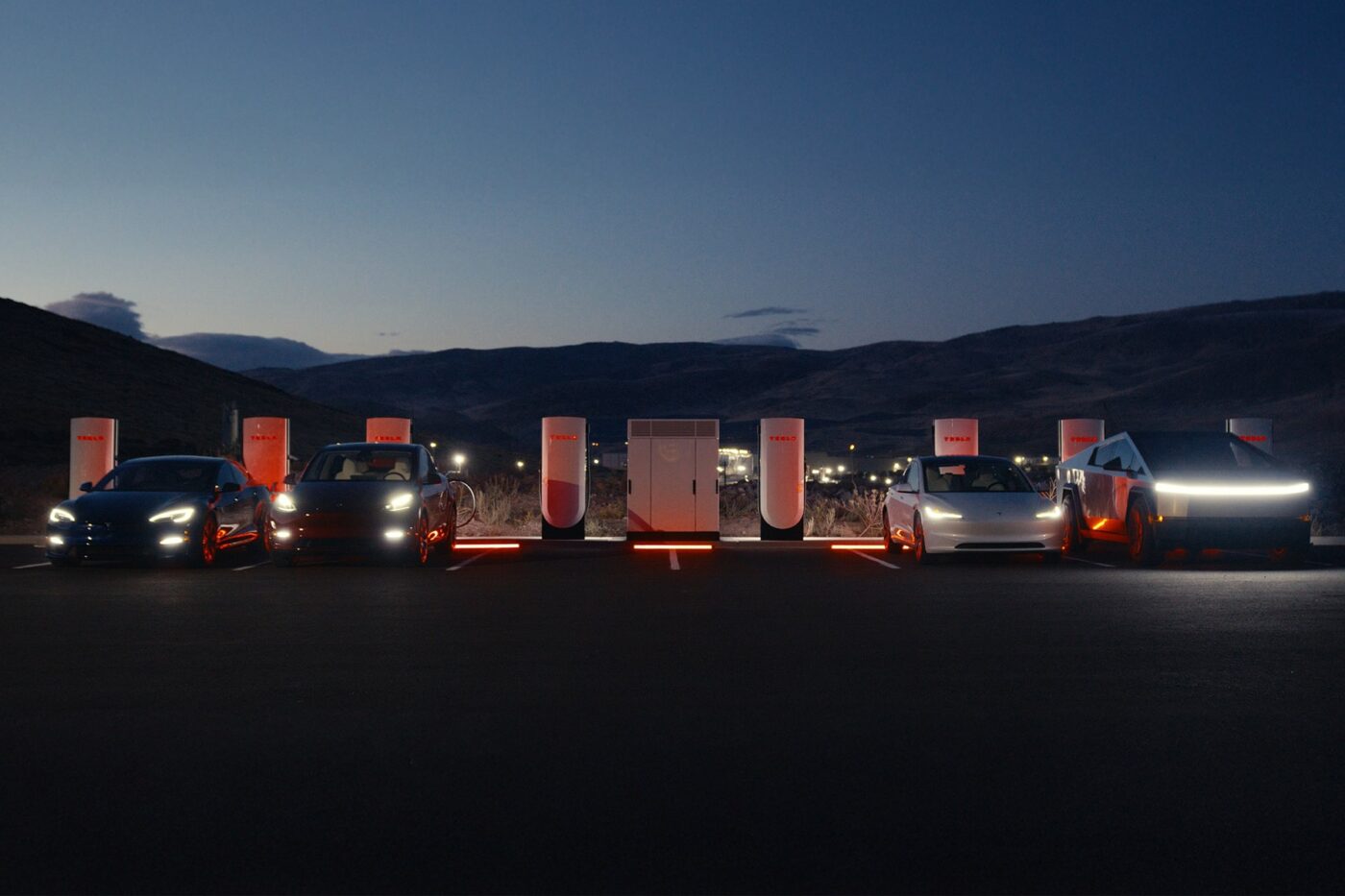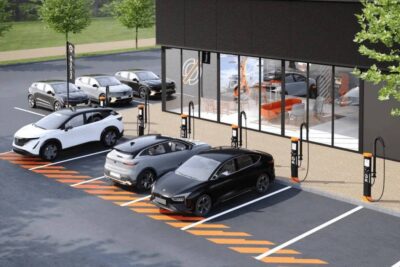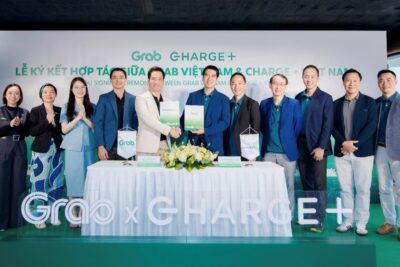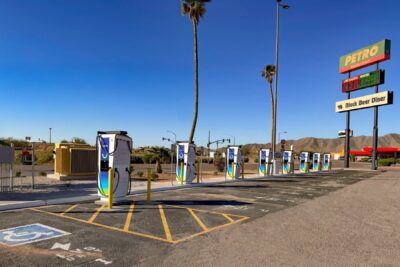Tesla increases Supercharger charging power to 500 kW
The first V4-generation Superchargers have been in operation since last spring – in Harderwijk in the Netherlands. The V4 generation is characterised, among other things, by the higher charging columns and a longer charging cable, which (for the first time for Tesla) is attached to the outside of the charging column. The longer cable should make it easier for third-party EVs (with a standardised charging port at the rear left) to plug in – and the payment terminal for ad-hoc charging is also aimed at non-Teslas.
However, as with the V3 Superchargers, the maximum charging power remained at 250 kW. The reason was simple. The V4 Post, as Tesla calls its chargers, were still combined with switch cabinets (or cabinets, as Tesla calls them) from the V3 generation. The bottleneck was thus not the charger but the control cabinet in the background.
Tesla’s new V4 Cabinet completes the more powerful V4 family. With the V4 Cabinet, the charging power at the V4 Posts will increase to up to 500 kW when charging an electric car. With the Semi electric truck, even 1.2 MW should be possible, as Malte Kendel, authorised representative and manager for EV Charging at Tesla, writes on LinkedIn. The Cybertruck, the first Tesla car with an 800-volt system, is expected to achieve 30 per cent shorter charging times. For the ‘S3XY Vehicles,’ i.e. the Model S, 3 X and Y, the peak output remains at 250 kW.
But customers are not the only ones to benefit. A V4 Cabinet supplies up to eight stalls with power, compared to four columns per control cabinet for the V3 generation. Tesla will thus need fewer control cabinets for a charging park of the same size in the future – according to Kendel, these require less space and are less complex. It will help realise charging parks more quickly. They will also have three times the energy density, the power electronics will be “designed to be the most reliable on the planet” and enable a higher throughput at lower costs.
However, it will not be possible to charge eight vehicles simultaneously with 500 kW; Tesla has set the connected load lower for economic reasons. “Posts can peak up to 500kW for cars, but we need less than 1MW across 8 posts to deliver maximum power to cars 99% of the time,” writes Max de Zegher, who has been part of Tesla’s Supercharger team since 2014 (including a short break), in a post on X. In other words, only in one per cent of (presumably simulated) cases does a car receive less charging power than it could use itself.
In his post, De Zegher also mentions the “small incremental improvements” that should be noticeable: “TV4 Cabinet has a 2% efficiency improvement. Superchargers already deliver over 5 TWh/year, 100 GWh/year in waste heat that can be saved.”
For the time being, of course, these are just announcements that cannot be verified yet. But that will be the case in a few months’ time. According to Kendel, the first Supercharger sites with V4 cabinets are due to open in 2025.





2 Comments